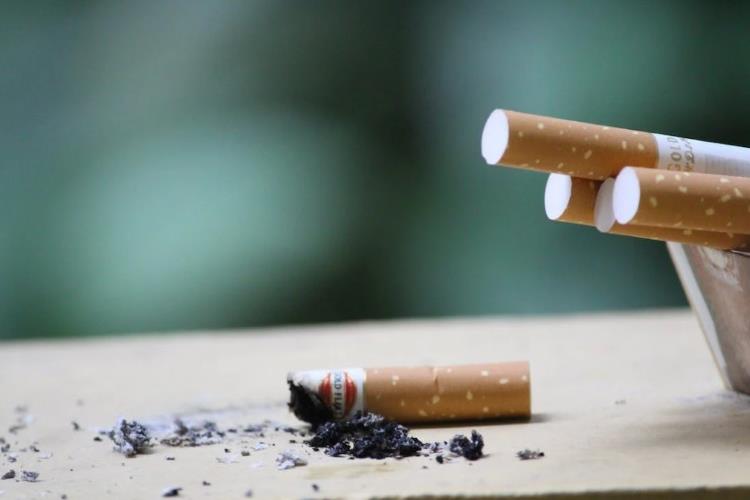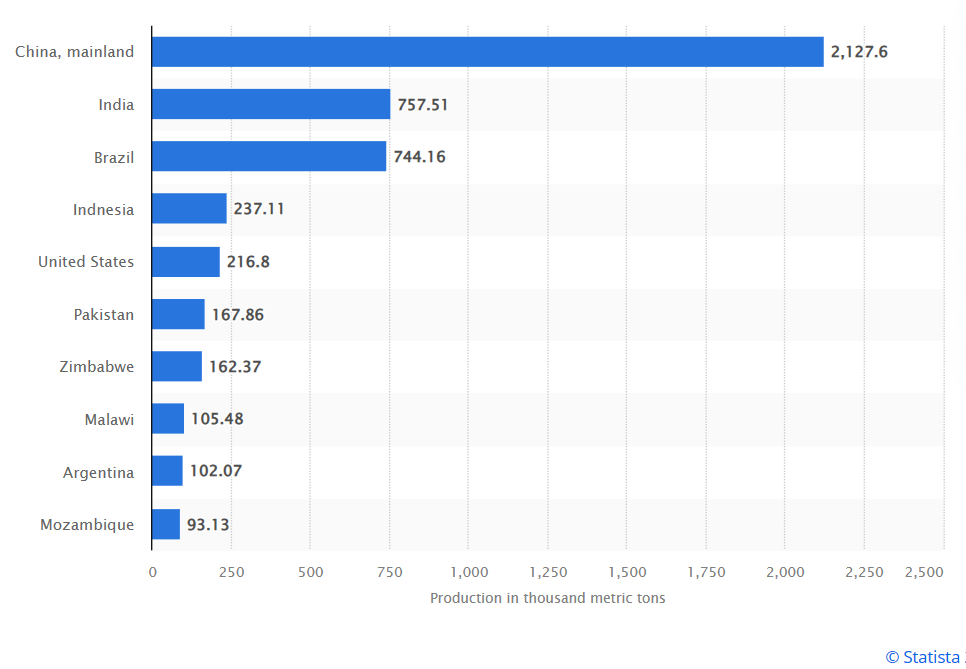
The theme of World No Tobacco Day, observed annually on May 31, is We need food, not tobacco. The global campaign for 2023 aims to raise awareness about the importance of cultivating sustainable food crops instead of tobacco, highlighting alternative crop production and marketing opportunities for tobacco farmers. Additionally, it seeks to shed light on the tobacco industry’s attempts to hinder the substitution of tobacco cultivation with sustainable crops, thereby exacerbating the global food crisis.
Tobacco, if used as directed, is the only legally available consumer product that causes death, claiming a life every six seconds, as stated by the World Health Organisation (WHO). Globally, tobacco-related illnesses cause more than 8 million deaths each year. Over 80% of the world’s 1.3 billion tobacco users reside in Low and Middle Income Countries (LMIC). In 2020, tobacco use was prevalent among 22.3% of the global population, with 36.7% of men and 7.8% of women consuming tobacco.
Tobacco stands as the leading cause of premature death worldwide, responsible for 25% of all cancer-related deaths globally. As the single largest avoidable health risk, tobacco consumption poses a significant challenge to achieving the sustainable development goals and improving community health. SDG 3.4 looks to reduce premature deaths caused by non-communicable diseases, including cardiovascular diseases, chronic respiratory illnesses, cancers, and diabetes by one third by 2030. SDG 3.a emphasises the need to strengthen the implementation of the WHO Framework Convention on Tobacco Control in all countries.
READ I Harm reduction can boost govt’s tobacco control efforts
The World No Tobacco Day 2023
A staggering 349 million people across 79 countries, many residing in LMICs, are currently experiencing acute food insecurity, with over 30 countries in Africa severely affected (WHO, March 2023). Moreover, more than 30 million children in the 15 most affected nations suffer from acute malnutrition (WFP, March 2023).
The 2023 Global Report on Food Crises, released on May 3, reveals that seven countries (Afghanistan, Burkina Faso, Haiti, Nigeria, Somalia, South Sudan, Yemen) are facing catastrophic levels of food insecurity, indicating the imminent threat of famine and extremely critical levels of malnutrition in various regions. This report marks the highest number of countries grappling with such extreme levels of food and nutrition insecurity in its history.
Following Russia’s invasion of Ukraine, countries have implemented a surge of trade-related policies. These policies, aimed at increasing domestic supply and reducing prices, have worsened the global food crisis. As of March 13, 2023, 22 countries have imposed 28 food export bans, and ten countries have enforced 14 export-limiting measures.
Detrimental effects of tobacco cultivation
Currently, tobacco is cultivated as a cash crop in over 125 countries, covering an estimated area of 4 million hectares. Major tobacco producers include China (39.6%), India (8.3%), Brazil (7.0%), and the United States (4.6%), with tobacco production spanning across more than 120 countries.
Many of these countries utilise vast stretches of fertile land for tobacco cultivation instead of cultivating nutritious food. Tobacco-growing nations often face negative economic repercussions due to the adverse health, environmental, and social impacts associated with tobacco cultivation. In many cases, foreign exchange earned from tobacco exports is used to import food, while the cultivation of tobacco leads to ill health among farmers and farm workers and irreversible environmental degradation, including the loss of precious resources such as water sources, forests, plants, and animal species.
Leading tobacco producing countries in 2021

The harmful effects of tobacco cultivation on the environment are particularly evident in low- and middle-income countries (LMICs). Compared to other agricultural activities like maize growing and livestock grazing, tobacco farming has a significantly more destructive impact on ecosystems, as tobacco farmlands are highly susceptible to desertification.
Furthermore, growing tobacco contributes to global deforestation at a rate of 200,000 hectares per year. Tobacco cultivation requires intensive resource usage, including the heavy application of pesticides and chemical fertilizers, which contribute to soil degradation. Consequently, land used for tobacco farming has reduced capacity for cultivating other crops, such as food, as tobacco depletes soil fertility.
Tobacco cultivation in India
Tobacco was introduced to India by the Portuguese in the 16th or 17th century. In 2021, the total area of harvested tobacco in India amounted to approximately 433,000 hectares. Indian tobacco is exported to about 100 countries.
Tobacco farming in India yields the highest profit per acre compared to any other crop globally. With abundant fertile land, strong economic growth, and a skilled workforce, tobacco farming is a highly lucrative business in India.
Research has shown that no other crop is as financially rewarding as tobacco. Tobacco generates annual foreign exchange earnings of Rs 4,400 crores and excise revenue of over Rs. 13,000 crores. In 2021, its total contribution to the national economy reached Rs 18,255 crores.
Commercial tobacco cultivation is concentrated in Indian states such as Andhra Pradesh, Telangana, Karnataka, Gujarat, Maharashtra, Bihar, Tamil Nadu, and West Bengal, with Andhra Pradesh ranking first in terms of tobacco production.
In India, the tobacco industry directly or indirectly supports around 36 million people engaged in production, processing, marketing, and exports, including 6 million farmers and 5 million individuals involved in bidi-rolling and tendu leaf-plucking.
However, eliminating tobacco cultivation would free up such land for alternative crop farming, thereby enhancing food security in countries where tobacco is prioritised over food crops. In India, economically viable alternative crops such as mixed cropping of hybrid cotton, chili, groundnut, French beans, etc., have emerged.
The potential profits gained from tobacco as a cash crop may not offset the damage inflicted on sustainable food production in LMICs. Given this context, there is an urgent need for legal measures to reduce tobacco cultivation and support farmers in transitioning to the production of alternative food crops.
Additionally, the tobacco industry is notorious for exploiting child labor in both cultivation and processing. This issue is particularly grave in India, where many children working in the tobacco industry suffer from Green Tobacco Sickness (nicotine-induced poisoning).
Health costs of tobacco consumption
Four out of every ten households in India have at least one member who smokes, which means that, in addition to direct tobacco consumption, a significant portion of the Indian population is exposed to secondhand smoke. This poses potentially severe health consequences for individuals and the country’s economy. According to the 2019-21 National Family Health Survey (NFHS-5), 4.1 percent of women surveyed reported tobacco consumption, whereas among men, this percentage was nearly tenfold at 39.1 percent. A third of all cancers in India have been linked to tobacco use.
In terms of the absolute number of consumers, India had approximately 267 million tobacco users in 2021, making it the second-largest consumer in the world. Among adults (aged 15+), 28.6% of the population currently uses tobacco products (men 42.4%; women 14.2%). Among youth (ages 13–15), 8.5% currently use some form of tobacco (boys 9.6%; girls 7.4%) (CTFK, Sept. 2021).
The economic costs associated with tobacco use account for approximately 1.04% of India’s Gross Domestic Product (GDP), while the excise tax revenue from tobacco only covers 12.2% of these costs. Direct medical costs alone amount to 5.3% of total health expenditure. The estimated annual direct medical expenditure on tobacco-related diseases is INR 44,210 crore (US$ 5.82 billion), while non-medical costs amount to nearly INR 1608 crore (US$ 211 million).
Tobacco taxes are the most cost-effective means of reducing tobacco use and healthcare costs, especially among youth and low-income individuals, while also generating revenue in many countries. Alongside taxes, pictorial warnings and advertising restrictions have contributed to reducing tobacco consumption in India.
Supporting alternative livelihoods
The tobacco industry often presents itself as an advocate for the livelihoods of tobacco farmers, but this is far from the truth. The intensive use of insecticides and toxic chemicals during tobacco cultivation contributes to the ill health of many farmers and their families. Furthermore, unfair contractual arrangements with tobacco companies keep farmers in poverty, and the use of child labor in tobacco cultivation hinders the right to education and violates human rights.
Nine out of the ten largest tobacco cultivators are low- and middle-income countries (LMICs), with four of them classified as food-deficit countries. The land currently dedicated to tobacco cultivation could be more effectively used to achieve SDG 2: Zero Hunger.
The WHO Framework Convention on Tobacco Control provides specific principles and policy options for promoting economically viable alternatives for tobacco workers, growers, and individual sellers (outlined in Article 17), as well as for enhancing environmental protection and public health (Article 18).
The implementation of these provisions needs to be strengthened in member countries. The 2023 WNTD campaign calls on governments and policymakers to enact legislation, develop suitable policies and strategies, and create market conditions that enable tobacco farmers to transition to growing food crops, thus providing them and their families with a better life and future.
George Cheriyan is Director of Centre for Environment and Sustainable Development India, a national NGO in Special Consultative Status with UN-ECOSOC, and accredited with UNEP & UN ESCAP. CESDI is also a member of South Asia Network on SDGs.


